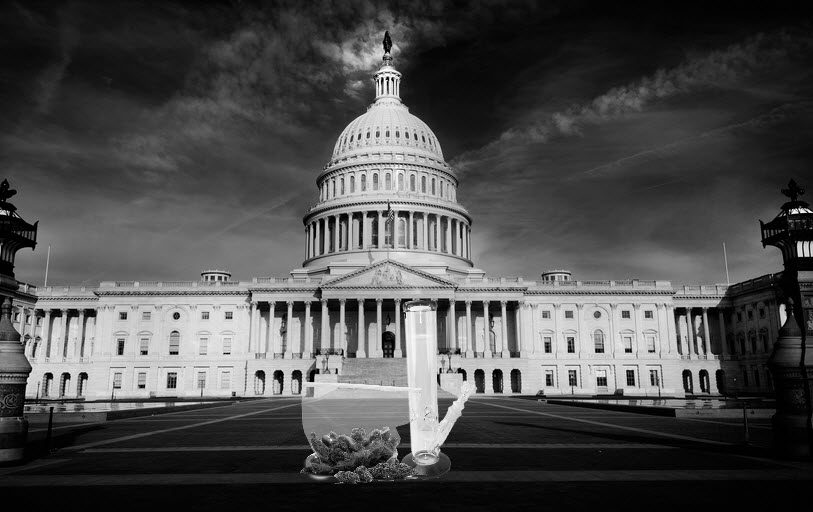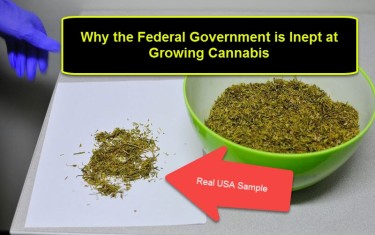
The US federal government just bought a ton of marijuana for medical research for the first time ever
It is official! The five-decade-long federal monopoly on cannabis production was broken by Groff North America Hemplex and the Biopharmaceutical Research Company (RBC). Never before has an institution outside of the University of Mississippi produced research-grade cannabis. With that monopoly lifted, things are looking up for federal cannabis reform.
These two companies announced that they have successfully harvested cannabis at their trial sites over the past few weeks. In early 2021, the Drug Enforcement Administration (DEA) gave both companies their blessing to set up a cultivation area for cannabis research.
ending a monopoly
Since 1971, a single facility at the University of Mississippi has been responsible for the production of cannabis plants for federal research purposes. This monopoly prevented other establishments (public and private) from growing marijuana for experimental reasons. In 2016, the DEA began to break the monopoly on marijuana for medical research. They have finally achieved what they set out to do in May 2021.
Applications from several cannabis companies have been approved through mid-2021. Groff Hemplex and the Biopharmaceutical Research Company announced that they are fully registered in the DEA database and have started growing cannabis plants. The first harvest phase, which started about a month ago, is being forwarded to research institutions. Marijuana researchers across the country have applauded this development.
George Hodgin, CEO of BRC, commented that the move is a start for better developments in the industry. The production of cannabis at the BRC facility will increase innovation in the federal legal cannabis industry. He also noted that the DEA approved everything that was requested for the concept.
“The move will lead to increased production of regulated substances like cannabis across the country,” Hodgin said. He also paid tribute to the role cannabis advocates have played over the past fifty years. None of these incremental steps would have happened without the loud drumbeats of these people. It’s also good to see that the DEA is responsible for this large-scale production of cannabis for research purposes.
Medical cannabis research is progressing
One of the reasons the federal cannabis industry has stagnated in recent years is the insufficient amount of information that has been collected about cannabis. The Mississippi facility could not produce enough high-quality plants needed for critical research. Having only one legal source for cannabis research for more than fifty years was not good enough for the United States of America. Many lawsuits and complaints have been filed to reverse this situation, but they have gone unanswered.
Cannabis advocates have criticized this unnecessary monopoly for many years. These groups write letters to agencies explaining how limited research is impeding serious research. Most of the plants produced by the Mississippi facility were below average. They were also chemically different from products sold in pharmacies across the country. So they were really of little use.
The DEA urged the Obama administration to end the Ole Miss monopoly, but was denied. The same thing happened during the Trump administration. Despite the president’s aversion to cannabis reform, the Biden administration eventually endorsed the DEA’s insistence on making requests for additional cannabis cultivation.
A crucial milestone
BRC completed its first harvest in November. In a few weeks they would start harvesting the second batch of cannabis at the facility. The Groff site completed its first harvest phase a few days ago.
The state cannabis industry can now boast of using high quality cannabis materials in their cannabis research labs. Results from experiments can also be linked to mainstream cannabis sold in pharmacies in legal states.
In a statement, Nora Volkow, director of the National Institute on Drug Abuse (NIDA), suggested that these new facilities study the chemical properties of medicinal cannabis in dispensaries to determine the exact type of cannabis to be supplied. This would help build on available information on the benefits and risks of common medicinal cannabis products.
There’s more to come
The DEA has also approved applications from universities and interested cannabis growers interested in being federally registered under the national cultivation program. The DEA will authorize these new facilities to produce marijuana for medical research purposes only.
Groff and BRC are only allowed to grow marijuana plants for calibration purposes and internal quality control. Over time, these two operators will be approved to sell their crops to the DEA for distribution for drug development and other clinical research.
According to Frank Haughton, CEO of Brighterside Vertical Farms (one of the farms commissioned by Groff to produce cannabis), what this latest agreement shows above all is that cannabis can be produced by many facilities, just like any other compound. He added that everything is going according to plan. The DEA sees evidence that the concept can create a pathway for a regular supply of cannabis. If these experiments lead to positive conclusions, Groff could become a domestic cannabis supplier as long as FDA approval is granted.
Additional agreements have been made with several scientists to accelerate the expansion of product development sites.
Supporting Marijuana Research
The DEA’s interest in the cannabis industry will motivate other agencies to support marijuana research and decriminalization. New legislation will be pushed through Congress this year to allow terminally ill patients to be treated with psilocybin. The DEA suggests the substance be used as an investigational treatment without fear of punishment.
The Biden administration is focused on comparing the research criteria for Schedule I drugs to those for Schedule II drugs. Cannabis advocates and legislators have stressed that current guidelines for Schedule 1 drug research are strict and prevent essential research. Once the criteria are kept at the same threshold, researchers have more freedom to study cannabis properties.
bottom line
Annual production rates of Schedule 1 drugs (marijuana and psilocybin) will increase this year. The DEA is committed to promoting cannabis research and demanding higher production yields. The agency will be directly involved in the production of marijuana and psychotropic drugs to develop effective drugs in preparation for a federal medicinal cannabis program.
WHERE THE US GOVERNMENT GETS WEED FOR TESTING READ MORE…

US GOVERNMENT APPROVES PRIVATE GROWERS RESEARCH LICENSES!
OR..

WHAT DOES STATE MARIJUANA TESTING ACTUALLY LOOK LIKE?

Post a comment: